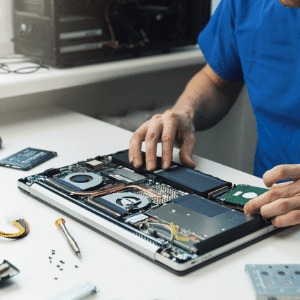Forensic Image Analysis: Techniques and Tools Used by Experts

Strong 8k brings an ultra-HD IPTV experience to your living room and your pocket.
Forensic image analysis is a critical component in the field of digital forensics, providing invaluable evidence in various legal proceedings, including court-martial cases. Experts in forensic image analysis employ a range of techniques and tools to extract, preserve, and interpret digital images, ensuring the integrity and reliability of the evidence. This blog delves into the key techniques and tools used by forensic image analysts to manage forensic images.
Understanding Forensic Image
A forensic image is an exact bit-by-bit copy of digital data, capturing all information from a digital device, including deleted files and hidden partitions. This comprehensive capture ensures that all potential evidence is preserved, allowing forensic analysts to examine data without altering the original source. The forensic image are crucial in legal investigations, providing a reliable basis for uncovering digital evidence.
Techniques in Forensic Image Analysis
Image Acquisition
The first step in forensic image analysis is acquiring the digital image. This process involves creating an exact replica of the digital data from a device. Forensic experts use write-blocking devices to prevent any modifications to the original data during acquisition. Popular tools for image acquisition include FTK Imager and EnCase. These tools ensure that the integrity of the evidence is maintained, providing a reliable foundation for further analysis.
Image Verification
Once the forensic image is acquired, its integrity must be verified. This is done using cryptographic hash functions, such as MD5 or SHA-256, to generate a unique hash value for the original data and the forensic image. If the hash values match, it confirms that the image is an exact replica of the original data. Any discrepancy in hash values would indicate potential tampering, compromising the integrity of the evidence.
Metadata Extraction
Metadata provides critical context about digital images, including creation dates, modification history, and file origins. Forensic analysts use specialized software to extract and analyze metadata, uncovering hidden details that may be pivotal in an investigation. Tools like ExifTool are commonly used to parse metadata from digital images, revealing crucial information about the image’s history and authenticity.
Image Enhancement
In some cases, digital images may be degraded or obscured, requiring enhancement techniques to improve clarity and detail. Forensic experts employ various image enhancement techniques, such as contrast adjustment, noise reduction, and sharpening, to reveal critical details within an image. Software like Adobe Photoshop and GIMP are often used in this process, allowing analysts to enhance images without altering the underlying data.
Pattern Recognition and Analysis
Forensic image analysts often need to identify patterns or anomalies within digital images. This involves using advanced pattern recognition techniques, such as facial recognition, object detection, and image segmentation. Tools like OpenCV and MATLAB are commonly used for pattern recognition, enabling analysts to detect and analyze specific features within images, providing valuable insights into the evidence.
Tools Used in Forensic Image Analysis
FTK Imager
FTK Imager is a widely used tool for creating forensic images of digital data. It allows analysts to acquire, verify, and analyze digital images, providing a robust platform for managing digital evidence. FTK Imager supports various file formats and offers comprehensive reporting features, making it a staple in digital forensics.
EnCase
EnCase is a powerful digital forensics tool used for data acquisition, analysis, and reporting. It offers a range of features for managing forensic images, including advanced search capabilities, metadata extraction, and pattern recognition. EnCase is widely regarded for its reliability and versatility, making it a preferred choice for forensic analysts.
ExifTool
ExifTool is a specialized tool for extracting metadata from digital images. It supports a wide range of file formats and provides detailed metadata analysis, allowing forensic analysts to uncover critical information about digital images. ExifTool’s versatility and accuracy make it an essential tool in forensic image analysis.
Adobe Photoshop
Adobe Photoshop is a popular tool for image enhancement and manipulation. Forensic analysts use Photoshop to improve the clarity and detail of digital images, revealing critical features that may be obscured or degraded. While Photoshop is not specifically designed for forensic use, its powerful enhancement capabilities make it a valuable tool in forensic image analysis.
OpenCV
OpenCV is an open-source computer vision library used for image analysis and pattern recognition. It provides a range of features for detecting and analyzing patterns within digital images, including facial recognition, object detection, and image segmentation. OpenCV’s flexibility and robustness make it a valuable tool for forensic analysts.
Forensic image analysis is a sophisticated field that combines advanced techniques and specialized tools to manage digital evidence. By employing rigorous acquisition, verification, and enhancement processes, forensic analysts ensure the integrity and reliability of forensic images. Tools like FTK Imager, EnCase, ExifTool, Adobe Photoshop, and OpenCV play a crucial role in this process, providing the capabilities needed to uncover critical evidence and support legal investigations. As digital evidence continues to play a pivotal role in modern legal proceedings, the expertise and tools used in forensic image analysis will remain essential for ensuring justice and accountability.
Note: IndiBlogHub features both user-submitted and editorial content. We do not verify third-party contributions. Read our Disclaimer and Privacy Policyfor details.


